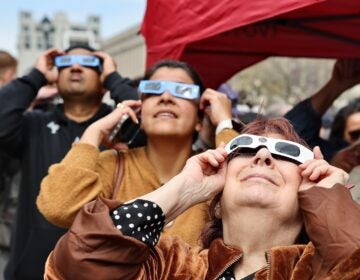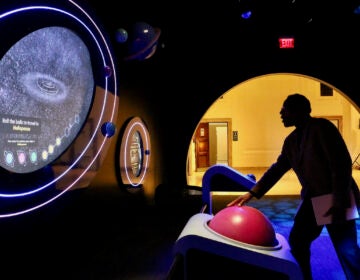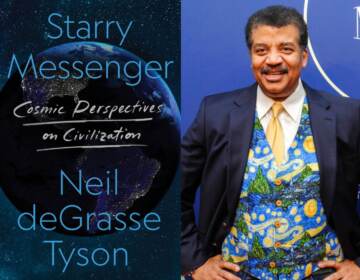See the solar eclipse using nature’s pinhole camera, tree leaves
Every sunny day — not just eclipse days — a tree canopy creates a pinhole effect with sunlight.
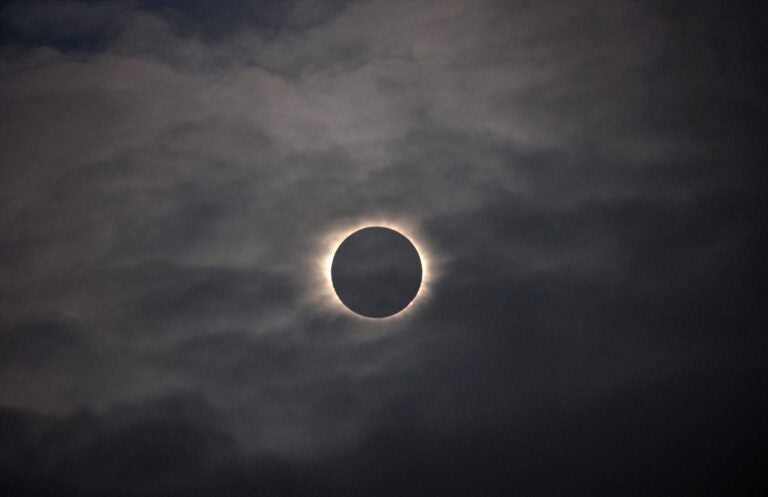
A total solar eclipse is visible through the clouds as seen from Vagar on the Faeroe Islands, Friday, March 20, 2015. (AP Photo/Eric Adams)
On Monday afternoon, much of the United States will have the rare opportunity to experience a solar eclipse.
While those in a small swath of the country will see a total eclipse, most of us — including Philadelphia-area residents — will see the moon covering about 80 percent on the sun.
That partial eclipse will appear as millions of tiny crescents covering the city’s sidewalks.
Of course, you can witness the eclipse by looking up at the sun — just be sure to wear protective eyewear because even an eclipsed sun can damage your eyes.
As the date approaches, special solar glasses are becoming harder to find. At the Franklin Institute on Thursday morning, dozens of people lined up on the promise that eclipse glasses would be available. They weren’t — the shipment had not yet arrived.
“Turns out you don’t need eclipse glasses to see what’s happening,” said Jayarti Das, chief scientist at the Franklin Institute. “We can see the shadow of the eclipse in real time projected onto sidewalks and buildings through the sun coming through the gaps between leaves on trees.”
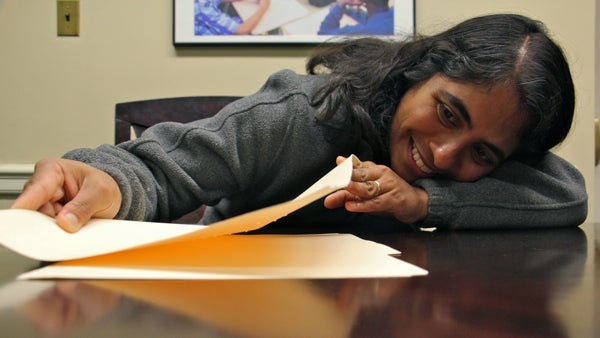
Sunlight filtering through the branches of trees will create a field of crescent-shaped light on the sidewalk below it. It’s the pinhole camera effect, multiplied naturally hundreds of time underneath each tree.
A pinhole camera is the most simple image-projection technology there is. You can use a thumbtack to punch hole in cardstock, hold that card under a direct light source, and a tiny, exact image of that light source will be projected on the other side of the hole.
“That’s what’s happening in the trees, each gap in the leaves acts as its own pinhole,” said Das. “So you see an image of the eclipse in each of those gaps.”
Every sunny day — not just eclipse days — a tree canopy is creating a pinhole effect with sunlight, but normally you don’t notice because all the tiny images of perfectly round suns blend together into a blob of sunlight.
During an eclipse the effect is more noticeable because of the unusual crescent shapes. It’s the only time you will be able to see the sidewalk covered by a carpet of moons.
On the day of the eclipse, the Franklin Institute will be using pinhole cameras and other optical techniques to witness and learn more about the phenomenon, including look up directly at it through a layer of solar viewing protection.

Saturdays just got more interesting.
WHYY is your source for fact-based, in-depth journalism and information. As a nonprofit organization, we rely on financial support from readers like you. Please give today.



